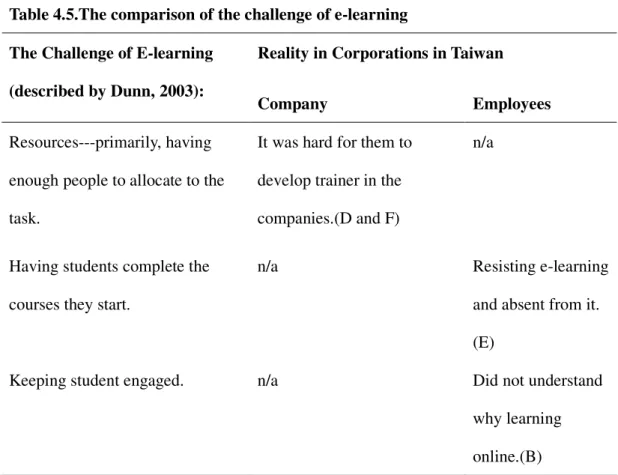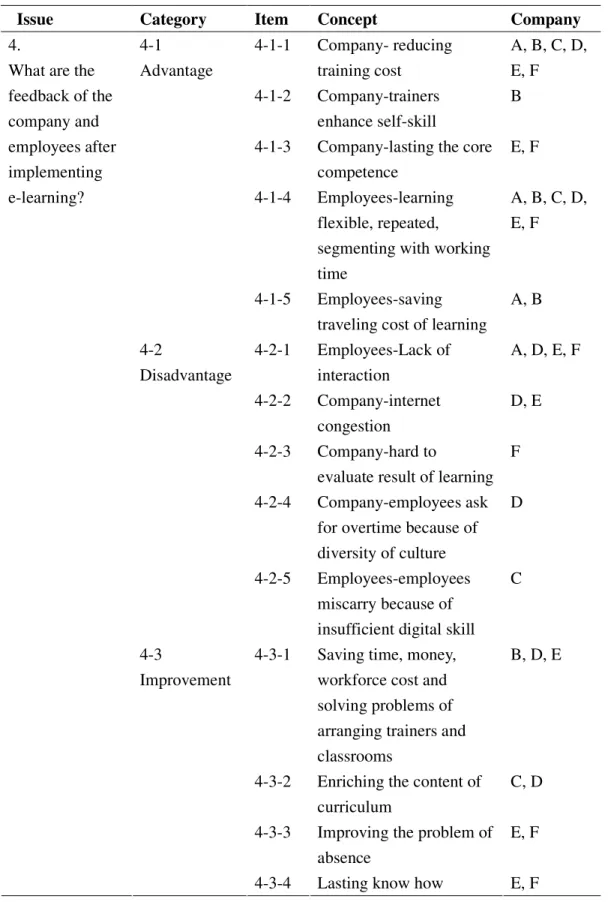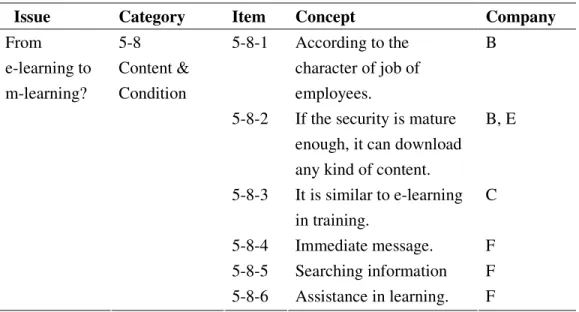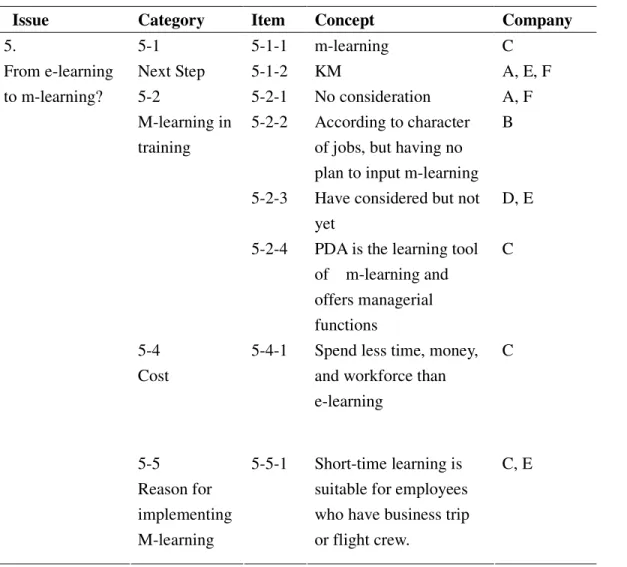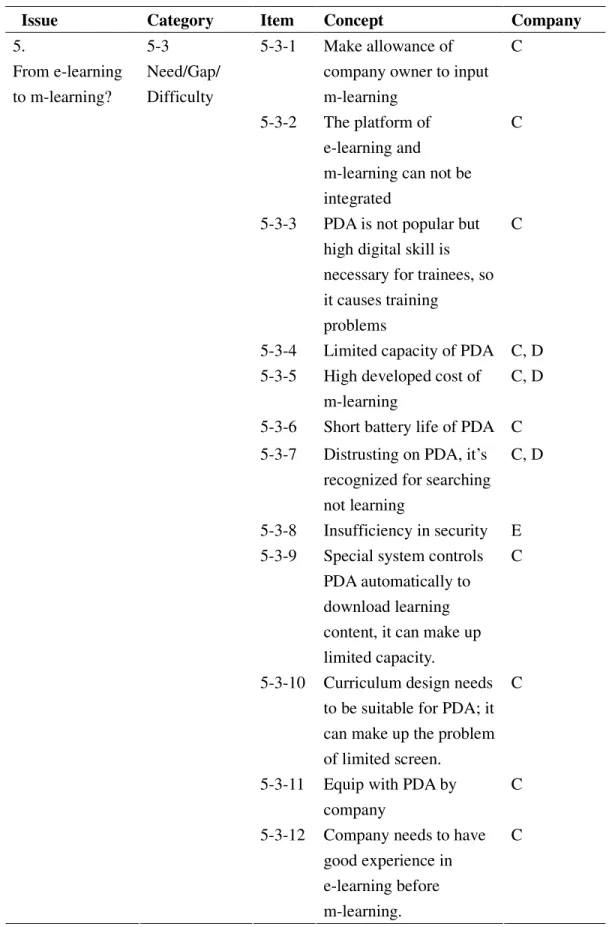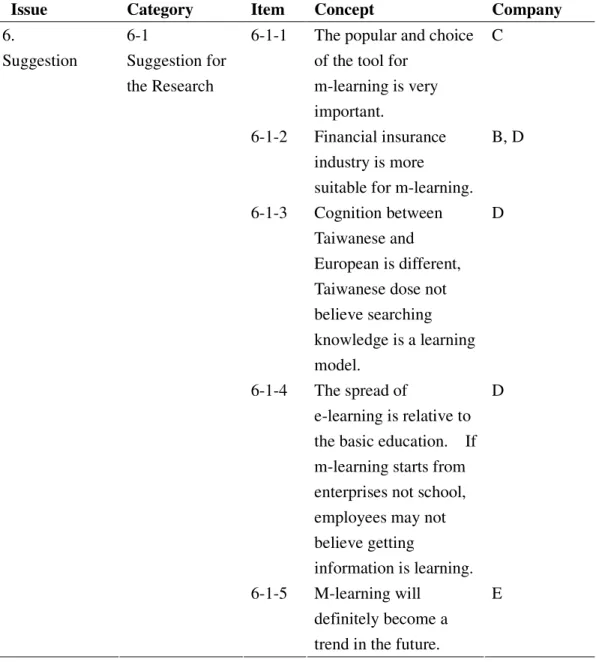There were six cases in three industries for studying of this research. The
全文
數據
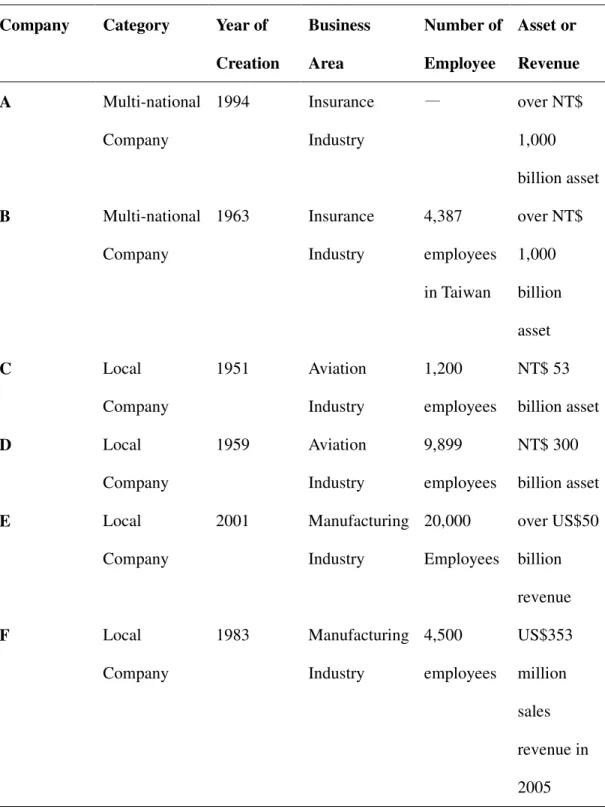
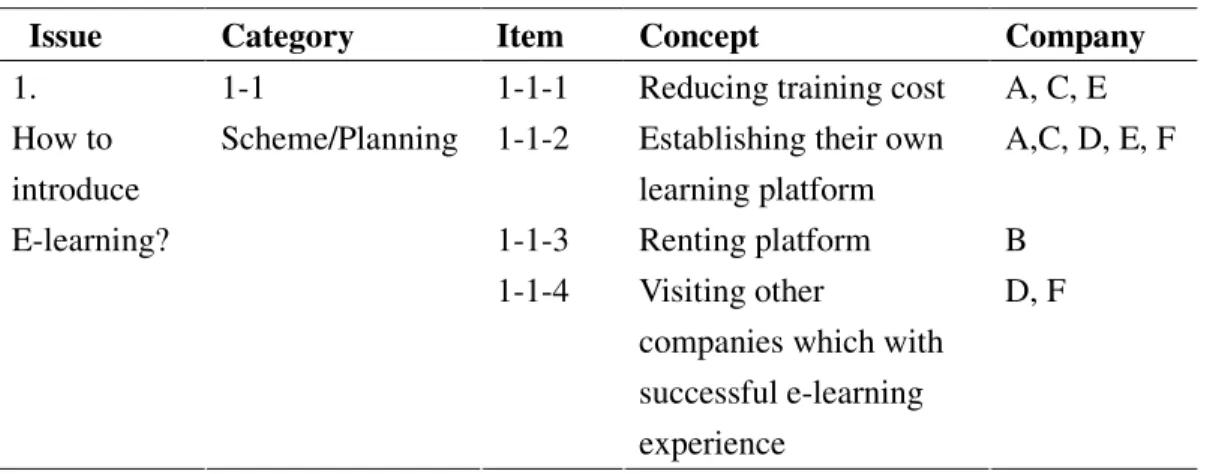
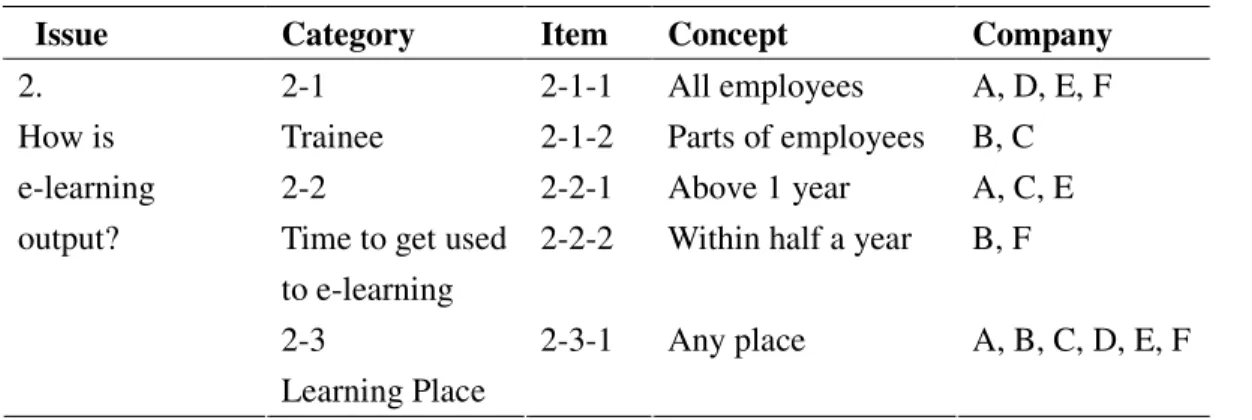
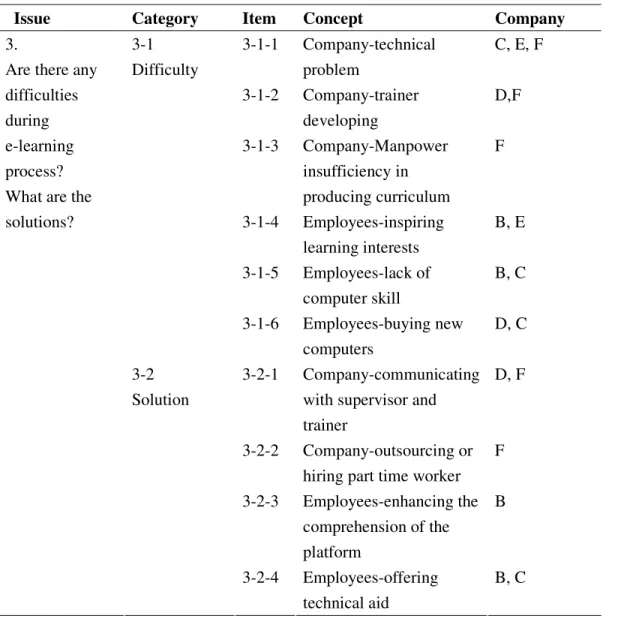
相關文件
In 2004, there were 298 establishments operating in licensed construction works that also acted as main contractors, of which only 81 (27.2% of the total) engaged in the
In 2004, there were 298 establishments operating in licensed construction works that also acted as main contractors, of which only 81 (27.2% of the total) engaged in the
● develop teachers’ ability to identify opportunities for students to connect their learning in English lessons (e.g. reading strategies and knowledge of topics) to their experiences
To enable the research team to gain a more in- depth understanding of the operation of the Scheme, 40 interviews were conducted, including 32 in eight case study
According to Shelly, what is one of the benefits of using CIT Phone Company service?. (A) The company does not charge
• elearning pilot scheme (Four True Light Schools): WIFI construction, iPad procurement, elearning school visit and teacher training, English starts the elearning lesson.. 2012 •
For example, there are the procedures of “Mazu’s establishment of a monastery” and the standards of “Baizhang’s introduction of pure regulations.” These were established to
Teachers can design short practice tasks to help students focus on one learning target at a time Inferencing task – to help students infer meaning while reading. Skimming task –
